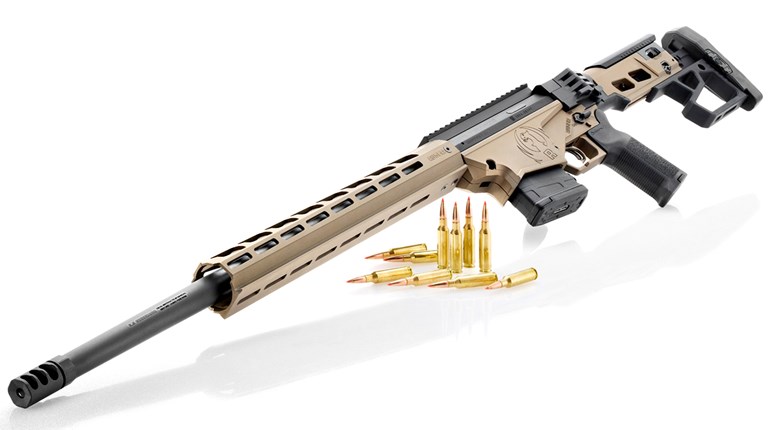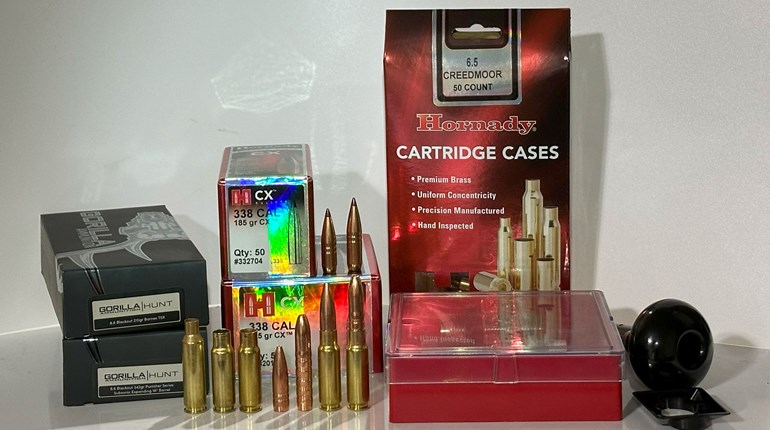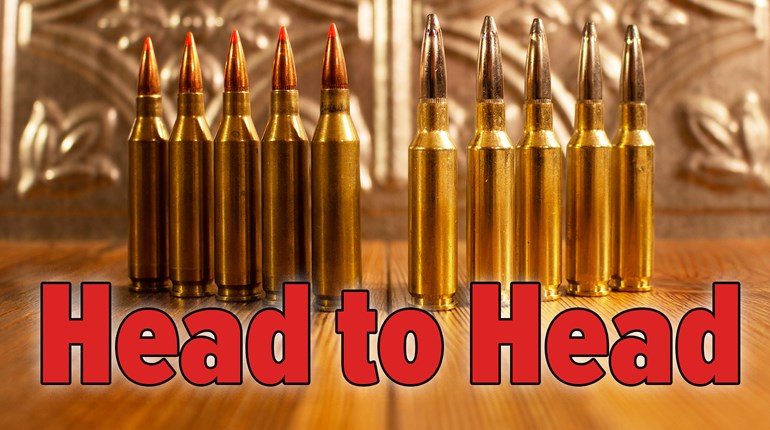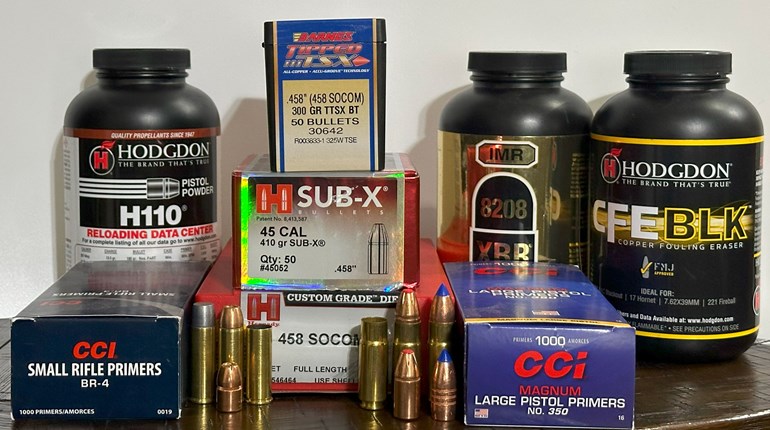
I’ll be up front here. The .243 Winchester is by far the least “alternative” ammo option I’ve done in this series so far. I personally blame my editor; he won’t let me trash the 6.5 Creedmoor like I’ve been wanting to (Editor’s Note: If I allowed this, he would write about nothing BUT the 6.5 Creedmoor), so I picked the next best thing. The 6mm variant of the Creedmoor cartridges is the next popular one in the line, and just like its more popular brother, it’s not all it’s cracked up to be for several reasons. This specific article will focus not so much on one cartridge (the “alternative” as typically the case in this series) being better, but more so on the fact that newer doesn’t necessarily mean better by default.
For handloaders like myself, I’ve never been a fan of any of hyped “wonder” cartridges. Why? Because they’re not impressive. It’s not that they’re bad cartridges, it’s just that—as this series was created to prove—if you handload, any of these “super” cartridges can be at the very least matched, if not outdone or beaten, by less common or less popular cartridges.
Now, approaching the topic from a hunting perspective, my primary goal is to get the best ballistics possible to dispatch an animal ethically and humanely, and do so as efficiently as possible. That said, these newer cartridges don’t do anything I couldn’t do before with something else; there’s no substantial gain from any of these newer cartridges. Furthermore, these cartridges have actually created a problem: hunters sometimes think they’re better shots than they really are simply because they buy into the cartridge hype, when what they really need is more practice, or to redefine what they consider ethical distance. In essence, marketing gives hunters false confidence due to a claimed feature or trait, but the hunters still have the same issue that’s plagued them to boot.
But I digress. Let’s look at the 6mm Creedmoor and compare it to the .243 Winchester for a tidy example. Ballistically, the two are essentially identical, going toe-to-toe when it comes to reloading data based on velocities and grain weights; in some instances, the 6mm Creedmoor comes out on top; in others the .243 is the winner. Each respective cartridge is fired from a short action, so the rifle weights and potential accuracy from action rigidity alone is moot, as is barrel-length advantages, since case capacity is roughly the same across the board, too. So, if two rifles are identical—one in .243 Win. and the other in 6mm Creedmoor—neither cartridge gets the nod on rifle characteristics alone.

“But what about twist rate?!?! You can shoot heavier bullets because of the twist rate that you can’t shoot out of the .243,” say Creedmoor harpies. But what about it? I could have a 1:8-twist barrel put on my .243 if I wanted, so I could then shoot the heavier bullets too (mostly match bullets not meant for hunting, anyway). “What about the bullet length? You could never seat long bullets properly because of the shorter neck of the .243!” Again, most match bullets not meant for hunting wouldn’t fare well in the .243 Win., sure, but the neck of the 6mm Creedmoor is only .03 of an inch longer at its base, as demonstrated by Nosler’s diagrams of each cartridge. If .03 of an inch makes that big of a difference in how bullets are seated because of the ogive of the bullet (the curve of the bullet starting at the nose to the body of the bullet before it straightens), I’d argue you’re looking too much at ballistic coefficient and profile. Hunters should instead be looking at terminal performance. A bullet can be the most aerodynamic bullet in the world, and perform absolutely horribly on game. Most super-high BC bullets are made to punch holes in paper, not vital organs, and the ethical ranges at which hunting occurs 99-percent of the time don’t require bullets that drop at most an MOA less at 400 yards.
To illustrate this, take a Barnes 95-grain LRX and a Barnes 112-grain Match Burner. The length of each bullet is 1.270 inches and 1.331 inches, respectively. Barnes’ load data—which shows both bullets being fired in each cartridge, meaning even the long bullets can be shot in the older .243 Win.—gives roughly the same velocities for many of the same powders between the cartridges. See the table below (results from Hornady’s Ballistics Calculator):


As the tables show, there is at most four inches of drop at 400 yards between the cartridges, meaning if a shooter can’t maintain an MOA-sized group or better at that distance, the difference in drop is irrelevant—the group size will be larger than the variance in drop anyway.
Having been in a marketing role previously, I can attest to a few terms and buzz words, like “inherently” tied to anything involving accuracy. “Inherent”, per the Merriam-Webster dictionary, means “belonging to or being a part of the nature of a person or thing.” When something is “inherently accurate” it just means it’s more likely to be accurate; it does not mean it’s automatically more accurate by default. In the Creedmoor’s case (pun intended), it means there is something about the cartridge that’s more likely to be accurate by comparison to what’s already available, but that doesn’t mean it will be. That’s why you don’t get a money-back guarantee with your 6mm Creedmoor ammo or rifle. That potential changes with the shooter’s capabilities more than anything. Any flaw in shooter’s form, be it trigger squeeze, flinching, breathing, etc. means all that extra potential accuracy—assuming the shooter got a good rifle and ammo that is actually accurate in real-world scenarios—goes right out the window.

Now, that’s not to say it isn’t true (see my last piece about the .375 Ruger VS the .375 H&H, and why belted magnums are “inherently” less accurate), but by handloading my own .243 Win. ammo, I can often beat a 6mm Creedmoor factory cartridge’s “inherent” accuracy. How do I know? Because I’ve done it; my handloads out of my Ruger M77 MKII in .243 Win. push a 100-grain bullet to nearly 3,100 fps and put a 3-round group in a 2-inch circle at 500 yards, far better than the MOA which is the typical accuracy standard. Now, I’ve put a lot of work into that rifle to get that kind of accuracy out of the gun. I changed stocks to ensure the barrel is free-floated, mounted a quality optic on it, and it’s had a trigger job. But that’s way cheaper than buying an all-new rifle for the hopes of something as good or marginally better. It’s a diminishing-returns problem.
So, what’s my point in all this? This begs the question, at what point is the idea of “inherent” accuracy no longer worth the expense? Just because a new cartridge has the chance to be more accurate because of its design does not mean it will make anyone a better shooter. There are so many variables that contribute to accuracy, it would be a shame to get rid of a truly accurate gun—especially one that’s got an unbelievably accurate handload built for it—just because it lacks a modern, “high-tech” design change like a shoulder angle or a longer neck, which really doesn’t matter unless you reload your own ammo, since those changes won’t influence the ammo you buy since you can’t change bullet depth unless you reload; you’re stuck with what the factory gives you. And if you do reload, then the longer neck can be compensated for in other ways. Is it beneficial? Sure. Necessary for accuracy? Not in the slightest.
Need more proof? Look at some of the accuracy results from old muzzle-loading rifles. How is this relevant? Those rifles don’t even have cases, so if “inherent accuracy” based off case is such a truth, muzzleloaders should have incredibly poor accuracy by comparison. For instance, an editor at American Rifleman shot a Model 1841 Mississippi long rifle with iron sights from a standing position, printing a two-inch group at 100 yards. Apparently, that’s horrible. Accounts of long-range competitions using Whitworth rifles show muzzle-loading rifles being shot at over 1,000 yards with sub-MOA accuracy. For readers of American Hunter, here are two more great examples. The author of the CVA Paramount Hardware was able to produce three-shot, 100 yard groups at just over a half-inch (.62"), with average groups turning in .75-inch groups, and the largest group at just under an inch (.82"), which means the projectiles are most definitely touching, considering the group size is smaller than the bullet’s diameter (in this case, .40 caliber). The Traditions NitroFire shot some even smaller groups—with a larger-diameter bullet (.50-caliber) to boot—with two different loads, one measuring .375 inches at 100 yards, and the other coming in at .5 inches at 100 yards. Just awful accuracy, I know. If only these muzzleloaders shot better …
Now consider even the slightest dull cutting tool; a loose screw not torqued to spec; or a barrel that’s not fully free-floated. You name it, there could be hundreds of reasons rifles are or are not accurate, none of which are cartridge related.
Still think a case’s shoulder angle and neck length matter? If a muzzleloader, which is as primitive as you can get outside of an unrifled musket, which has none of the modern accuracy enhancements generated by a case in any sense, can print those kinds of groups at 100 yards, rest assured, your 6mm Creedmoor’s shoulder angle and neck length won’t improve performance near as much as you think, especially compared to the classic .243 Win.; extrapolate those results to a deer’s chest, and I think unless you’re hunting at over 1,000 yards, your older, less-marketed cartridge will do just fine.





































